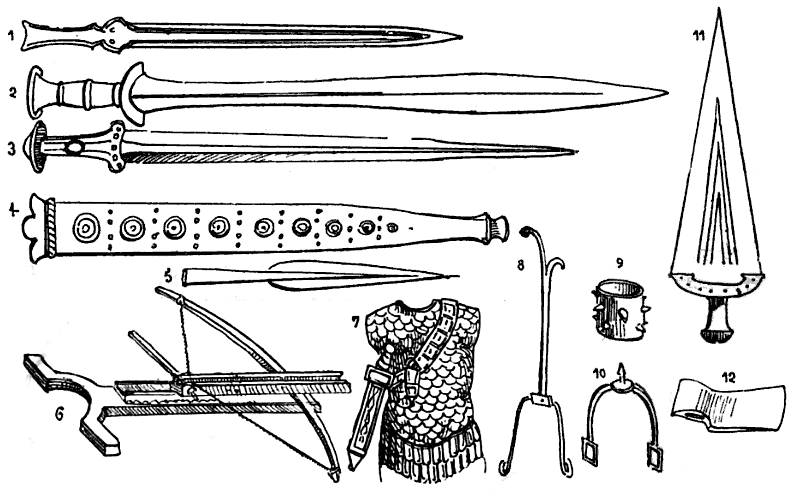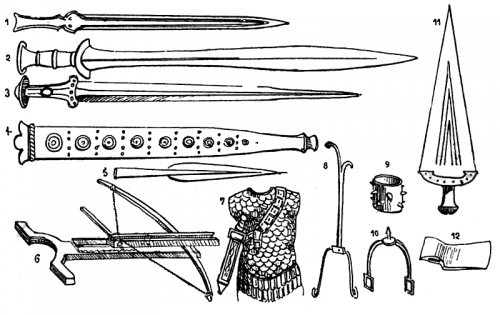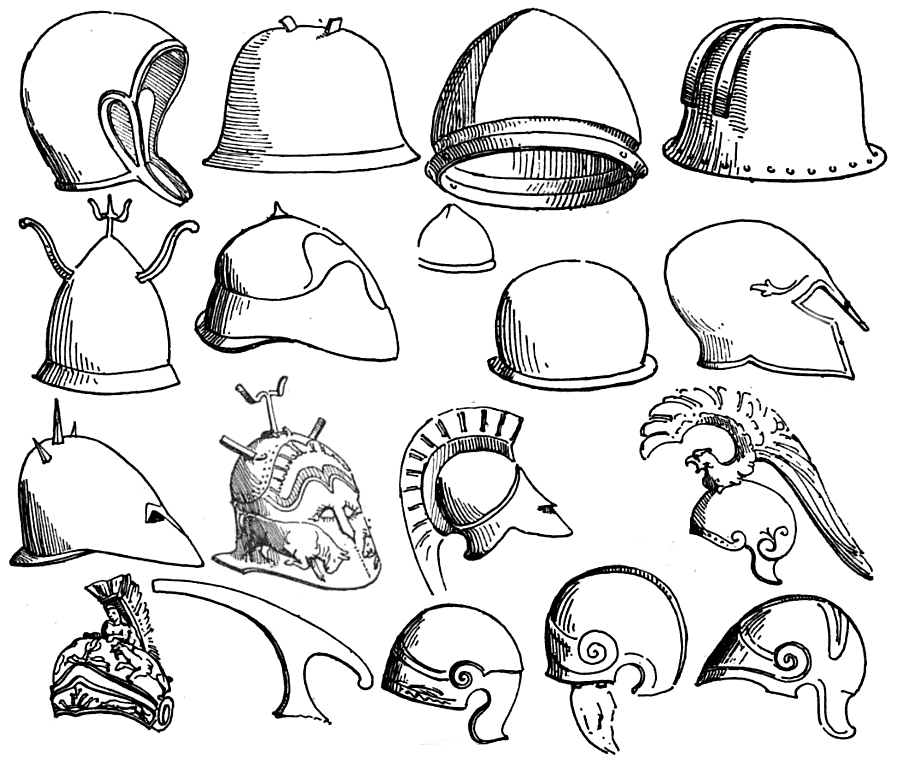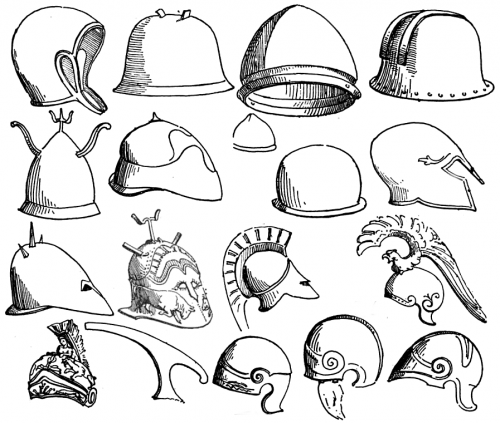Pulling from the same source as my previous posts on Ancient Egyptian weapons and Ancient Greek helmets, I’ve assembled a collage of common weapons used in Ancient Greece.
1. Greek sword, bronze, 19.5 inches.
2. Greek sword, bronze, 32 inches.
3. Greek sword, bronze, 25 inches, called Gallo-Greek.
4. Bronze sheath belonging to the previous sword.
5. Bronze lance-head.
6. Hand arbalest, or balista, similar to a crossbow. The drawing is taken from a description in a Byzantine text, but its actual use in Ancient Greece is doubtful.
7. A coat of mail showing how the sword is worn on the right.
8. Antique spur, bronze.
9. Greek spur, bronze.
10. Greek or Etruscan mace-head, covered in points.
11. Antique dagger, bronze, 16.5 inches. Called a “parazonium”, it was common to both Greeks and Romans.
12. Hatchet, bronze.
The illustrations and descriptions have been taken from An Illustrated History of Arms and Armour: From the Earliest Period to the Present Time, by Auguste Demmin, and translated by Charles Christopher Black. Published in 1894 by George Bell.




